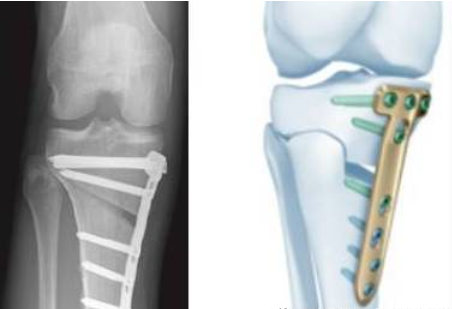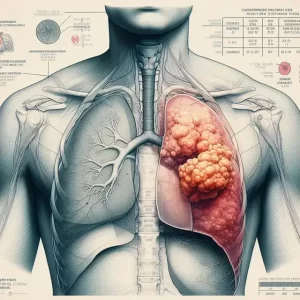Frequently asked questions for patients with high tibial osteotomy (HTO)
- FDA Approved Opdualag: The First Immunotherapy Targeting LAG-3
- Cutaneous Reactions Following COVID-19 Vaccination: A Review of the Evidence
- Brief Intermittent Exercise Reduces Heart Disease and Death Risk
- Personalized Lung Tumor Chips Assess PD-1 Therapy Response
- Study Shows Prior Infection Offers Strong Immunity to Original COVID-19 Strain
- Chinese Food Products Dominate Korean Tables Amid Safety Concerns
Frequently asked questions for patients with high tibial osteotomy (HTO)
- AstraZeneca Admits for the First Time that its COVID Vaccine Has Blood Clot Side Effects
- Was COVID virus leaked from the Chinese WIV lab?
- HIV Cure Research: New Study Links Viral DNA Levels to Spontaneous Control
- FDA has mandated a top-level black box warning for all marketed CAR-T therapies
- Can people with high blood pressure eat peanuts?
- What is the difference between dopamine and dobutamine?
- What is the difference between Atorvastatin and Rosuvastatin?
- How long can the patient live after heart stent surgery?
Frequently asked questions for patients with high tibial osteotomy (HTO). High tibial osteotomy (HTO) can be traced back to 1958, when Jackson first proposed this surgical method.
High tibial osteotomy (HTO) can be traced back to 1958, when Jackson first proposed this surgical method to treat knee osteoarthritis with varus deformity. However, with the advent of total knee arthroplasty (TKA), osteotomy gradually faded out of people’s vision.
However, due to the high rate of prosthesis revision in total knee replacement, the development of internal fixation materials and the improvement of indications, HTO has regained the attention of doctors.
This article provides answers to some common questions that patients have about HTO.
1. What is HTO?
High tibial osteotomy, referred to as HTO, refers to high tibial osteotomy, which corrects uneven force lines, improves symptoms, relieves pain, and can preserve bone to the utmost extent and reduce bone destruction, thereby delaying knee osteoarthritis progress.
Patients can go to the ground early after the operation, and recover quickly, with complete preservation of knee joint function.

2. What is the principle of HTO?
The anatomical characteristics of the human knee joint determine that the internal force of the knee joint is usually greater than the external one. Therefore, knee osteoarthritis tends to occur on the inside. When the knee joint develops varus, the pressure on the inside of the knee joint will further increase and the wear will increase significantly.
Large, thus forming a vicious circle. By correcting the varus or valgus deformity of the knee joint, balancing the force on the inner and outer sides of the knee joint and reducing the force on the inner side, the progress of the inner cartilage abrasion can be prevented, and at the same time, the pain can be relieved to a large extent, even the worn Cartilage and injured meniscus are conditionally able to repair themselves.
3. How to do HTO?
In general, HTO is to cut the inner side of the tibia adjacent to the knee joint, expand a certain angle with a dilator in the middle, and add strong internal fixation to straighten the legs, and the line of force passes through the outer compartment of the knee joint to slow the knee.
Wear on the inside of the joint. It can be divided into closed high tibial osteotomy and open tibial high osteotomy. Both methods have their own merits. At present, open tibial high osteotomy is the main clinical practice. 4. What are the advantages of HTO?
Compared with total knee arthroplasty (TKA), HTO does not damage any important structures in the joint such as cartilage, cruciate ligament, meniscus, etc. It is a true knee-sparing surgery, which can completely preserve the function and proprioception of the knee joint , Patient satisfaction is high.
At the same time, HTO also has the advantages of simple operation, less trauma, fast postoperative recovery, and good patient function recovery.
5. What kind of patients are suitable for HTO?
① Relatively young patients under 65 years old (female under 60 years old);
②BMI<30kg/m2;
③Patients with insignificant degeneration of articular cartilage in the lateral compartment;
④The range of motion of the knee joint is normal, and the knee joint is stable;
Especially friends who had knee inversions when they were young, they are what we commonly call “rolled legs”. Because of the cause of hypoplasia, the effect is better after surgery is corrected.
6. How is the effect of HTO surgery?
With the continuous update of technology and the development of internal fixation materials, the effect of the current HTO has been greatly improved compared with the earlier HTO.
According to the current literature, 95% of patients who did not undergo other operations 5 years after osteotomy, 91.6% of those who did not undergo other operations 10 years after the operation, and those who did not undergo other operations 10 years after unicondylar replacement surgery are also More than 90.
7. Is the recovery after HTO fast?
After the HTO operation, you can move on the ground immediately. The weight bearing degree is limited to the absence of severe pain. The double crutches are protected for one month. After the review, it can be changed to single crutches. One month to one and a half months full weight bearing, and three months to resume work.
8. Will HTO have sequelae?
Most patients recover well after HTO, and only a few may have some complications (incidence rate is less than 1%), such as deep vein thrombosis of the lower extremities, common peroneal nerve injury, surgical incision infection, tibial plateau fracture, and knee joint Ligament injury, internal fixation loosening, compartment syndrome, etc.
9. Can I still exercise and work after HTO surgery?
HTO surgery preserves the patient’s own joints, can restore knee joint function to the greatest extent, retain proprioception, and can meet the patient’s high degree of activity. It can not only return to normal life, but also return to work, and even continue to exercise or work.
10. Can you tell us about the HTO carried out by Director Liu Wanjun’s team?
Our team has carried out the first Opti-Knee-assisted navigation high tibial osteotomy (HTO) in the country. In addition, our team replaces more than 1,000 joints each year, and has accumulated a large number of cases and rich experience in diagnosis and treatment, especially in complex joints. The surgical treatment of diseases is at the leading domestic level.
Sum up
HTO preserves the natural knee joints of patients with osteoarthritis,
The movement function and comfort of the joints are retained to the greatest extent,
It has inherent advantages over joint replacement.
(source:internet, reference only)
Disclaimer of medicaltrend.org



